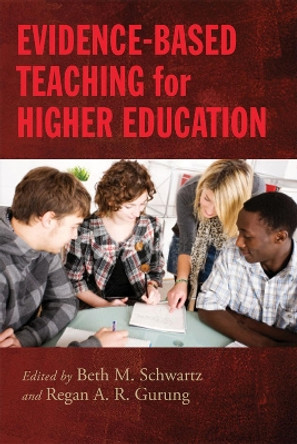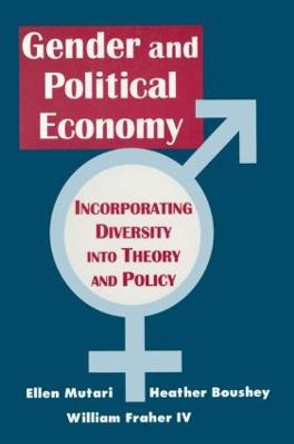Description
How do we educate our students about cultural diversity and cultural differences, and eliminate cultural ignorance, stereotyping, and prejudice? What are the conceptual issues involved in reaching this goal? How can we integrate these perspectives in disciplinary and diversity courses, and the curriculum?This book is a resource for answering these questions. Within the framework of current scholarship and discussion of essential concepts, it offers practical techniques, and empirically proven "best practices" for teaching about diversity. The book opens with a conceptual framework, covering such issues as distinguishing teaching to a diverse audience from teaching about diversity and contrasting the incorporation of culture across the curriculum with tokenistic approaches. Subsequent chapters identify classroom practices that can optimize students' learning, especially those from culturally diverse backgrounds; describe feminist principles of education that that promote learning for all students; and address principles of effective on-line instruction for diverse populations.The book is intended for faculty integrating diversity into existing courses, and for anyone creating courses on diversity. The ideas and suggestions in the text can be incorporated into any class that includes a discussion of diversity issues or has a diverse student enrollment. The contributors offer pragmatic and tested ways of overcoming student misconceptions and resistance, and for managing emotional responses that can be aroused by the discussion of diversity. The editors aim to stimulate readers' thinking and inspire fresh ideas. The book further provides teachers of diversity with a range of effective exercises, and attends to such issues as teacher stress and burnout.This book can also serve to inform and guide department chairs and other administrators in the design and implementation of diversity initiatives.
About the Author
Regan A. R. Gurung is Chair of the Human Development Department and Professor of Human Development and Psychology at the University of Wisconsin, Green Bay. He is the author of numerous scholarly articles and presentations, of a health psychology textbook (Wadsworth, 2006) that was the first book to use a completely cultural approach, a co-author on a book on pedagogical research, and co-editor of two other books, one on sociocultural issues in mental health (Blackwell-Wiley, 2009). He is a member of the Society for the Teaching of Psychology Diversity Task Force, and is on the University of Wisconsin System Institute of Race and Ethnicity Advisory Committee. Loreto R. Prieto is a Professor of Psychology and Director of U.S. Latino/a Studies program at Iowa State University. He has authored over 100 publications and presentations, mostly on diversity issues. He co-edited The Teaching Assistant Training Handbook and is a Past-Chair of the Diversity Task Force for the Society for the Teaching of Psychology and former Chair of the Diversity Working Group for the APA's Psychology Partnership Project. He frequently serves as a consultant and speaker to academic departments and programs.
Reviews
"All of the individual essays in this volume are quite useful and as a collection the volume is essential for faculty and administrators seeking to integrate diversity issues across the curriculum."
Jonathan David Lawrence, Canisius College
Teaching Theology and Religion
"Getting Culture, an edited volume with 31 short, easy-to-read chapters, frames itself as providing "best practices? in teaching about culture and infusing diversity into the higher education curriculum... this book can offer a wide variety of activity and assignment ideas in different contexts."
Educational Developers Caucus Resource Review
"The book is intended for faculty integrating diversity into existing courses and for anyone creating courses on diversity. The ideas and suggestions in the text can be incorporated into any class that includes a discussion of diversity issues or has a diverse student enrollment. The contributors offer pragmatic and tested ways of overcoming student misconceptions and resistance and for managing emotional responses that can be aroused by the discussion of diversity."
Rice Lake Chronotype
"provides a set of "best practices" for approaching the pedagogical challenges of teaching diversity... Recommended."
Choice
"This book offers practical advice and empirically proven best practices for teaching high school and college students about diversity. It outlines ways to overcome student misconceptions and resistance, and methods for managing emotional responses that can be aroused in discussions of diversity. The book opens with a conceptual framework, contrasting the integration of culture across the curriculum with tokenistic approaches. Subsequent chapters identify classroom practices. These chapters describe feminist principles of education that promote learning for all students, and address principles of effective on-line instruction for diverse populations. The book is intended for faculty and administrators in the design and implementation of diversity courses and initiatives."
Book News Inc.
"This volume's editors have compiled a set of wide-ranging tools for teaching about diversity among diverse student populations. Articles cover an array of topics, including general approaches to diversity education, specific exercises within and across disciplines, and strategies for coping with the stresses of teaching controversial topics. The collection offers guidance that is particularly valuable for those just beginning to incorporate diversity in the classroom and is pertinent to veteran teachers as well."
Diversity & Democracy (AAC&U)
Book Information
ISBN 9781579222802
Author Regan A. R. Gurung
Format Paperback
Page Count 400
Imprint Stylus Publishing
Publisher Taylor & Francis Inc
Weight(grams) 498g







